Why 2025 Is the Year Small Businesses Can Finally Compete The Giants with small business AI tools?
Let’s be honest—running a small business has always felt like bringing a knife to a gunfight. While corporate giants deploy entire teams of specialists, we’re juggling marketing, customer service, accounting, and everything in between, often with a skeleton crew or completely solo.
But here’s the game-changing revelation we’re witnessing in 2025: artificial intelligence is fundamentally rewriting the rules of competition. For the first time in business history, we small players have access to tools that can amplify our capabilities to match—and sometimes even surpass—what large corporations achieve with massive teams.
The numbers tell a remarkable story. According to a recent national survey, 82% of small business owners now believe adopting AI is essential for staying competitive. Over 50% are actively exploring AI implementation, and 25% have already integrated AI into their daily operations. This isn’t hype—it’s a fundamental shift in how we can compete.
And the best part? We don’t need a tech degree, a massive budget, or an IT department to harness this power. The AI tools available today are designed for us—practical, affordable, and surprisingly easy to use.
Let’s explore how we can level the playing field and compete with the big players using Small Business AI Tools.
Table of Contents
Understanding the Competitive Landscape We Face
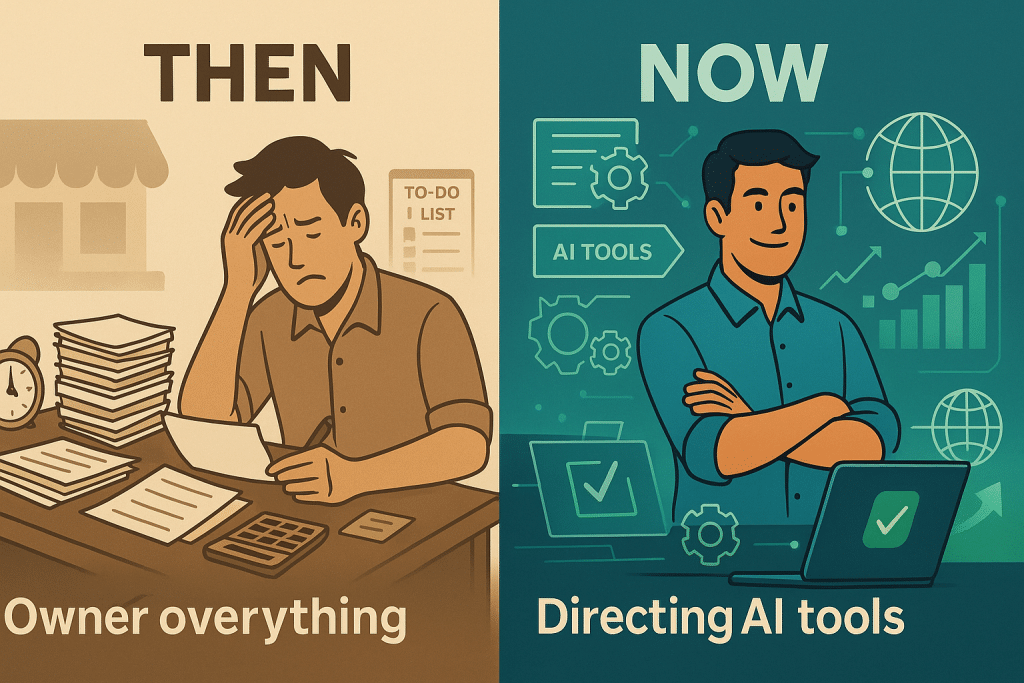
First, let’s acknowledge what we’re up against. Large companies have advantages that have traditionally been insurmountable:
- Specialized teams for every function (marketing, customer service, data analysis, operations)
- Economies of scale that reduce per-unit costs
- Advanced technology and IT infrastructure
- Data analysts who can extract insights from customer behavior
- 24/7 customer support capabilities
- Sophisticated marketing across multiple channels
Meanwhile, according to American Express research, 87% of small business founders wear multiple hats while running their operations. We’re the CEO, the marketing department, the customer service team, and the janitor—all rolled into one.
But here’s what’s changed: AI tools can now handle in minutes what used to take dedicated teams days to accomplish. We’re seeing a fundamental democratization of capabilities that were once exclusive to corporations with deep pockets.
The AI Tools Transforming Small Business Competition
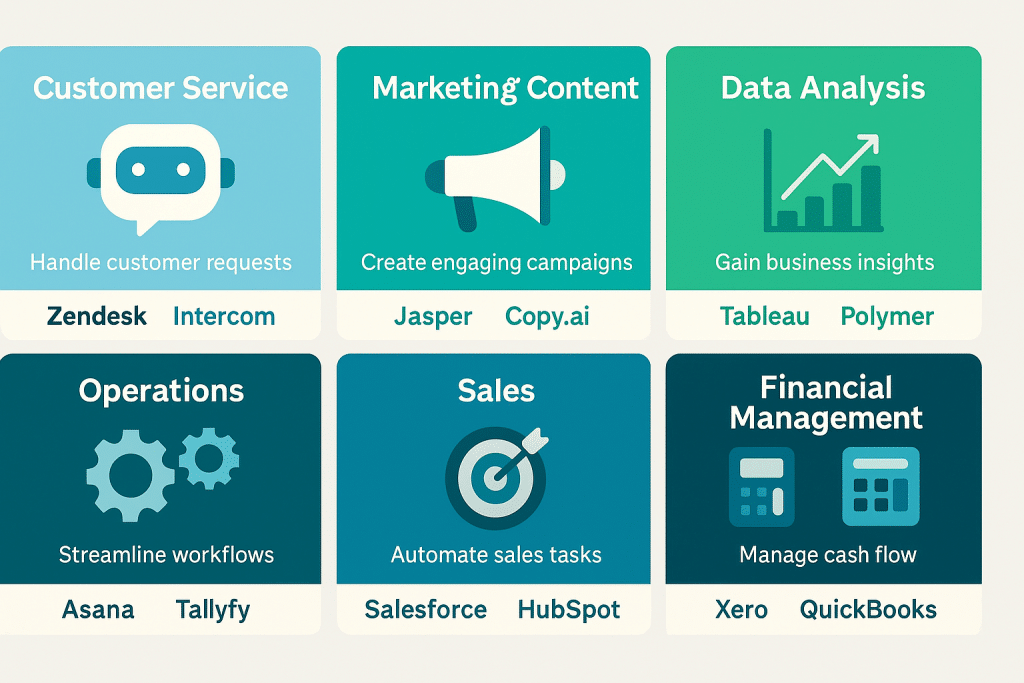
Let’s break down the specific ways AI is helping us compete:
1. Customer Service That Never Sleeps
Remember when 24/7 customer support was a luxury only big corporations could afford? Not anymore.
How AI Helps Us Compete:
AI-powered chatbots and virtual assistants can now handle customer inquiries round-the-clock, responding instantly to common questions, guiding customers through processes, and escalating complex issues to us when needed.
Real Impact:
- We can provide instant responses even when we’re sleeping or working on other tasks
- Customers get help immediately rather than waiting for business hours
- We capture leads and sales that would otherwise be lost to competitors with larger support teams
Tools We Can Use:
- ChatGPT for general customer queries and content generation
- Intercom or Drift for AI-powered live chat
- Zendesk AI for automated ticket routing and responses
A bakery owner we know implemented a simple AI chatbot for taking custom cake orders. Previously, she was losing orders because she couldn’t respond quickly enough when busy baking. Now, the AI collects all order details 24/7, and she just fulfills them. Her custom orders increased by 40%.
2. Marketing That Matches Corporate Campaigns
Creating compelling marketing content used to require hiring writers, designers, and marketing specialists. Today, AI can help us produce professional-quality content at a fraction of the cost and time.
How AI Helps Us Compete:
AI tools can now generate blog posts, social media content, email campaigns, and even video scripts tailored to our brand voice and audience. We can produce in one afternoon what used to take a full marketing team a week.
Real Impact:
- We can maintain consistent social media presence across multiple platforms
- We can create SEO-optimized content without expensive agencies
- We can A/B test different marketing approaches just like the big companies do
Tools We Can Use:
- Jasper AI for marketing copy and blog content
- ChatGPT for brainstorming and content drafting
- Canva AI for professional graphic design
- HubSpot for marketing automation with AI-powered features
- Synthesia for creating AI-generated marketing videos
According to Entrepreneur magazine, 75% of real estate brokerages now use AI to streamline operations and produce polished marketing materials faster than ever. If they can embrace it, so can we.
3. Data Analysis That Reveals Hidden Opportunities
Big companies have data scientists analyzing customer behavior, market trends, and operational efficiency. We can now access similar insights through AI tools designed for non-technical users.
How AI Helps Us Compete:
AI can analyze our sales data, customer interactions, website traffic, and market trends to identify patterns we’d never spot manually. It can predict which products will sell, when to run promotions, and which customers are most likely to return.
Real Impact:
- We make data-driven decisions instead of relying solely on gut feeling
- We identify our most valuable customers and focus efforts accordingly
- We optimize pricing and inventory based on actual patterns
Tools We Can Use:
- Google Analytics with AI insights for website behavior analysis
- Microsoft Power BI for business intelligence
- Tableau for visual data analysis
- Salesforce Einstein for sales predictions
A small e-commerce clothing store owner used AI analytics to discover that 70% of her revenue came from repeat customers buying specific items. She shifted her marketing to focus on those customers and products, increasing revenue by 35% without spending more on advertising.
4. Operational Efficiency That Saves Hours Daily
Administrative tasks—scheduling, invoicing, inventory management, payroll—consume hours that we could spend growing our business. AI automation tools can handle these repetitive tasks with minimal supervision.
How AI Helps Us Compete:
AI can automatically schedule appointments, send invoices, track inventory levels, process expenses, and even handle basic bookkeeping. What used to take us hours now happens in the background while we focus on strategic work.
Real Impact:
- We reclaim 5-10 hours per week for revenue-generating activities
- We reduce human error in repetitive administrative tasks
- We can operate lean without sacrificing professional execution
Tools We Can Use:
- QuickBooks with AI for automated bookkeeping
- Calendly with smart scheduling features
- Zapier for connecting apps and automating workflows
- n8n for complex automation without coding
5. Sales Intelligence That Closes Deals
Large companies have entire sales teams with CRM systems that track every customer interaction. We can now access similar capabilities through AI-powered sales tools.
How AI Helps Us Compete:
AI can score leads based on likelihood to convert, draft personalized follow-up emails, remind us when to reach out to prospects, and even predict which products customers might need next.
Real Impact:
- We never lose track of potential sales opportunities
- We follow up at optimal times with personalized messages
- We focus our limited time on the highest-value prospects
Tools We Can Use:
- HubSpot CRM with AI sales features
- Pipedrive with smart contact scoring
- Reply.io for AI-powered email sequences
- LinkedIn Sales Navigator with AI insights
6. Content Creation at Corporate Speed
Creating videos, graphics, presentations, and written content used to require multiple specialists or outsourcing to agencies. AI now enables us to produce professional content ourselves.
How AI Helps Us Compete:
From generating product descriptions to creating explainer videos, AI tools help us produce content at a pace that matches (or exceeds) what large companies with full creative teams achieve.
Real Impact:
- We can test multiple marketing approaches quickly
- We create professional assets without expensive contractors
- We maintain consistent brand presence across all channels
Tools We Can Use:
- Midjourney or DALL-E for image generation
- Descript for video editing and transcription
- Grammarly with AI writing assistance
- Beautiful.ai for presentation design
The Economics: Why AI Makes Sense for Small Budgets
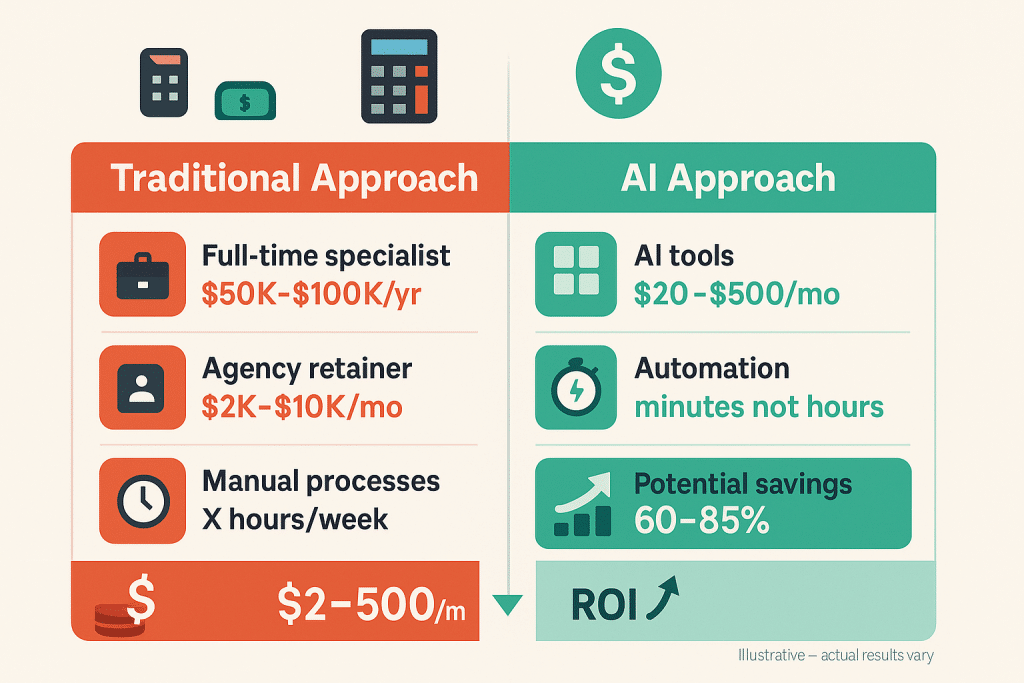
Let’s talk dollars and cents—because for us, every expense matters.
Traditional Approach Costs:
- Full-time marketing specialist: $50,000-$75,000/year
- Customer service representative: $35,000-$45,000/year
- Data analyst: $70,000-$90,000/year
- Marketing agency retainer: $2,000-$10,000/month
- Virtual assistant: $15-$50/hour
AI-Powered Approach Costs:
- Comprehensive AI tool suite: $100-$500/month
- AI marketing platform: $50-$200/month
- AI customer service chatbot: $20-$100/month
- AI analytics tools: Often free or $50-$150/month
- Automation platforms: $0-$100/month
The math is compelling. For what we’d pay one specialist for a month, we can access multiple AI tools that work 24/7 without vacation days, sick leave, or benefits.
McKinsey research shows that businesses redesigning workflows with AI see the biggest impact on earnings. For small businesses specifically, early adopters report returns of $3.70 for every $1 invested in AI tools.
Real-World Success Stories: Small Businesses Winning With AI
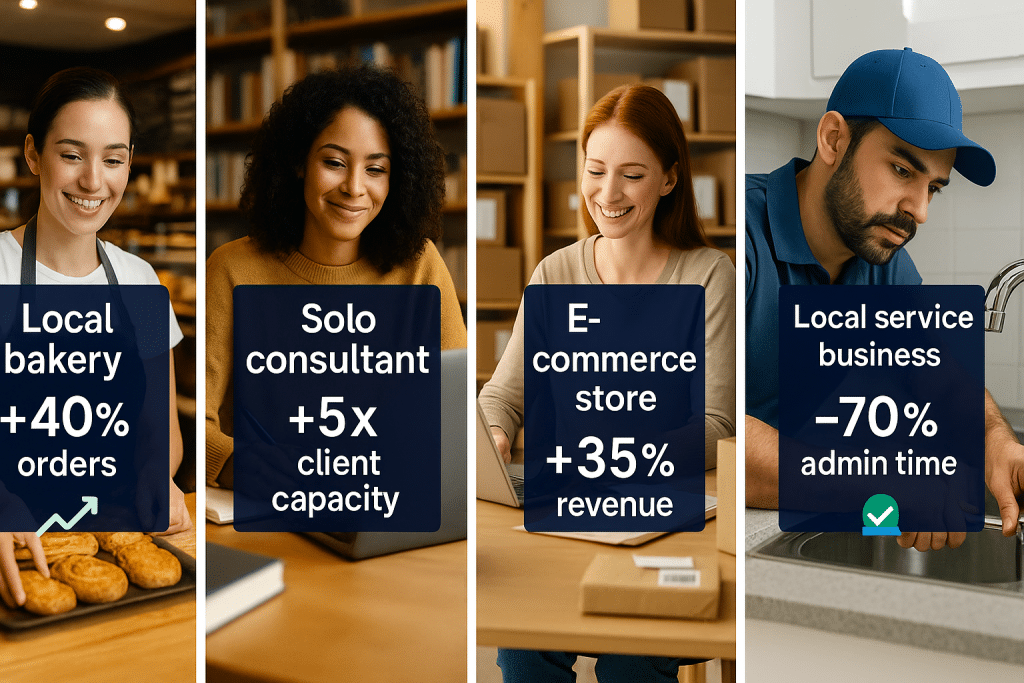
Let’s look at how real small businesses are using AI to compete:
The Solopreneur Consultant
Challenge: One-person consulting business struggling to handle inquiries, create proposals, manage projects, and deliver client work.
AI Solution: Implemented ChatGPT for proposal drafting, n8n for client onboarding automation, and AI scheduling tools.
Result: Increased client capacity from 3 to 15 active projects without hiring help. Revenue increased 5x in one year.
The Local Service Business
Challenge: HVAC company losing calls to competitors because they couldn’t respond quickly outside business hours.
AI Solution: Deployed AI-powered answering system that qualifies leads, schedules appointments, and sends confirmations.
Result: Capture rate for after-hours inquiries jumped from 20% to 85%. Added $150K in annual revenue without hiring an answering service.
The E-Commerce Retailer
Challenge: Spending 15 hours/week creating product descriptions and social media content.
AI Solution: Using AI writing tools for product copy and social content generation.
Result: Reduced content creation time to 3 hours/week. Used freed time to launch new product line that generated 30% of revenue.
The Professional Services Firm
Challenge: Small accounting firm struggling with client communication and document processing during tax season.
AI Solution: Implemented AI chatbot for common questions and AI document processing for data extraction.
Result: Handled 40% more clients with same staff. Client satisfaction scores increased from 7.2 to 9.1 out of 10.
Overcoming the Barriers We Face
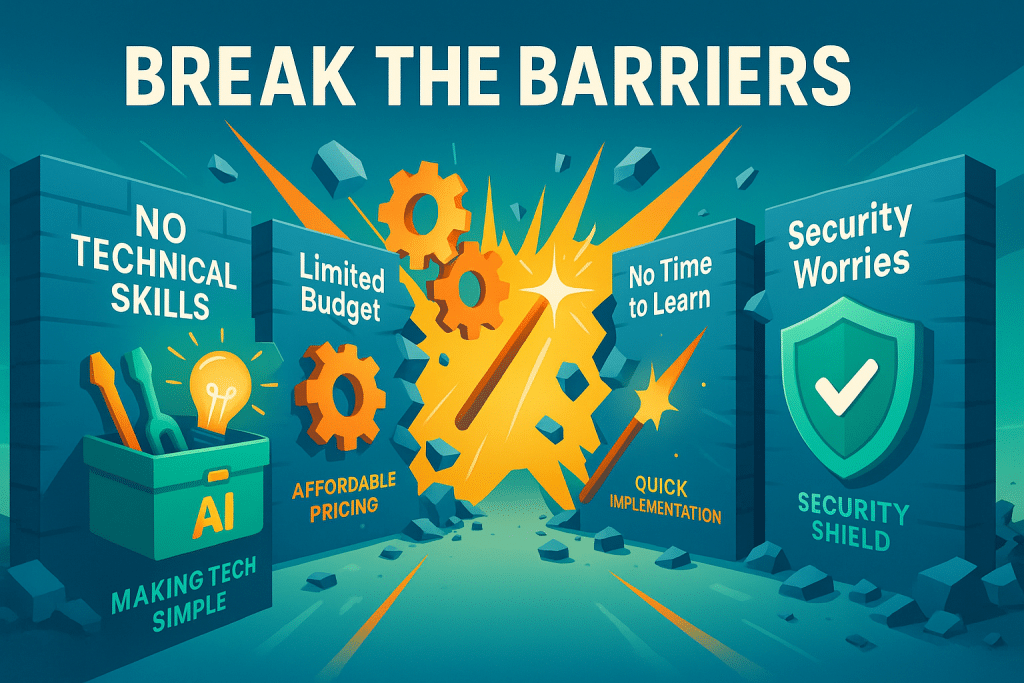
We know what you’re thinking: “This sounds great, but…” Let’s address the common concerns:
“I’m not tech-savvy enough”
Reality: Modern AI tools are designed for non-technical users. Most feature intuitive interfaces, templates, and step-by-step guidance. If you can use email and browse websites, you can use these tools.
Action: Start with user-friendly platforms like ChatGPT or Canva AI that require zero coding. The U.S. Chamber of Commerce’s Small Business B(AI)sics initiative offers free training specifically for entrepreneurs.
“I don’t have time to learn new tools”
Reality: Most AI tools require 30 minutes to a few hours to start using effectively. The time you invest upfront gets repaid many times over in efficiency gains.
Action: Block 30 minutes this week to experiment with one free AI tool (ChatGPT is perfect for starting). Focus on just one task—like drafting social media posts—and master that before expanding.
“What about security and data privacy?”
Reality: Legitimate AI platforms have security measures comparable to other business software you already use. Many offer on-premise or private cloud options for sensitive data.
Action: Research the security certifications of tools you’re considering. Start by using AI for non-sensitive tasks (content creation, scheduling) before expanding to more sensitive areas.
“It’s too expensive for my budget”
Reality: Many powerful AI tools offer free tiers or trial periods. Even paid options typically cost less than hiring part-time help for the same functions.
Action: Start with free tools (ChatGPT, Google AI features, Canva free tier) to prove value before investing in premium versions.
“AI will replace the personal touch that makes my business special”
Reality: AI handles repetitive tasks so you have MORE time for personal interactions with customers. It’s a tool that amplifies your human capabilities, not replaces them.
Action: Use AI for background work (scheduling, data entry, initial responses) while you focus on high-touch customer relationships that build loyalty.
Getting Started: Your 30-Day AI Implementation Plan
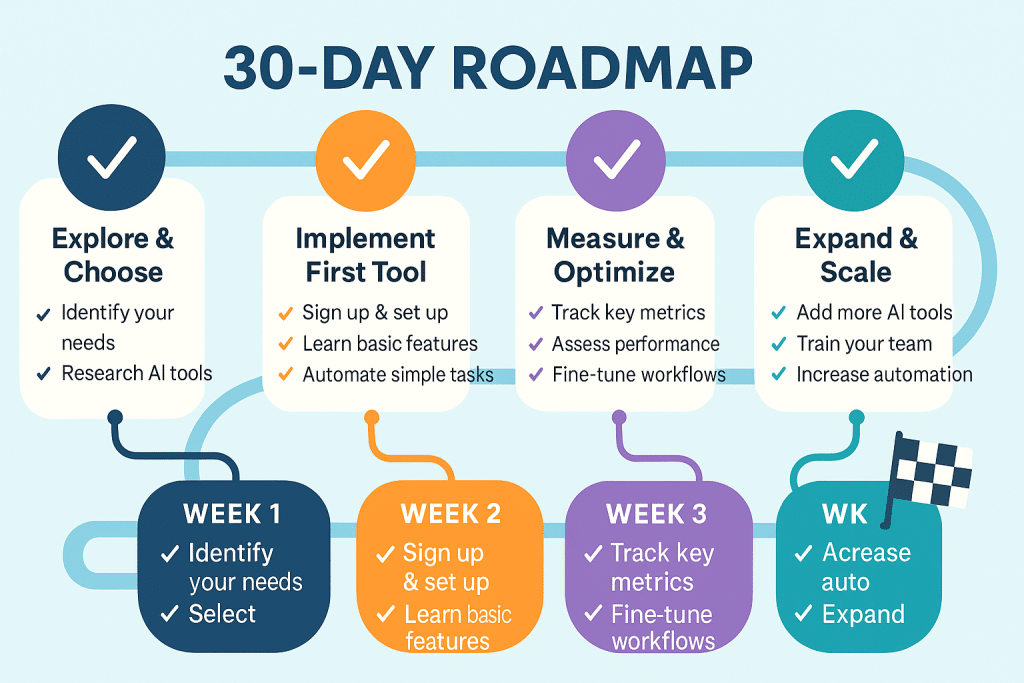
Ready to start competing with AI? Here’s a practical, step-by-step approach:
Week 1: Identify & Explore
Days 1-3: Find Your Biggest Time Drain
- Track how you spend your time for 3 days
- Identify the most repetitive, time-consuming tasks
- List tasks that keep you from revenue-generating work
Days 4-7: Research & Choose One Tool
- Based on your biggest time drain, research relevant AI tools
- Read reviews from other small business owners
- Sign up for free trials of 2-3 options
- Choose ONE tool to implement first
Common Starting Points:
- If drowning in customer inquiries → AI chatbot
- If struggling with content creation → AI writing tool
- If losing track of leads → AI-powered CRM
- If spending hours on admin → Automation platform
Week 2: Implement & Test
Days 8-10: Basic Setup
- Complete the initial setup of your chosen tool
- Connect it to your existing systems (website, email, etc.)
- Configure basic settings and preferences
Days 11-14: Test & Refine
- Use the tool in real scenarios
- Note what works well and what needs adjustment
- Refine prompts, settings, or configurations
- Create templates for common uses
Week 3: Measure & Optimize
Days 15-17: Track Results
- Measure time saved compared to manual approach
- Track quality of outputs
- Gather feedback from customers or team if applicable
Days 18-21: Optimize
- Adjust settings based on results
- Learn advanced features
- Create workflows or shortcuts for common tasks
Week 4: Expand & Scale
Days 22-25: Train Others
- Document your process
- Train any team members or contractors
- Create standard operating procedures
Days 26-30: Plan Next Tool
- Identify the next bottleneck to address
- Research tools for that challenge
- Prepare to repeat the cycle
The Competitive Advantages We Gain
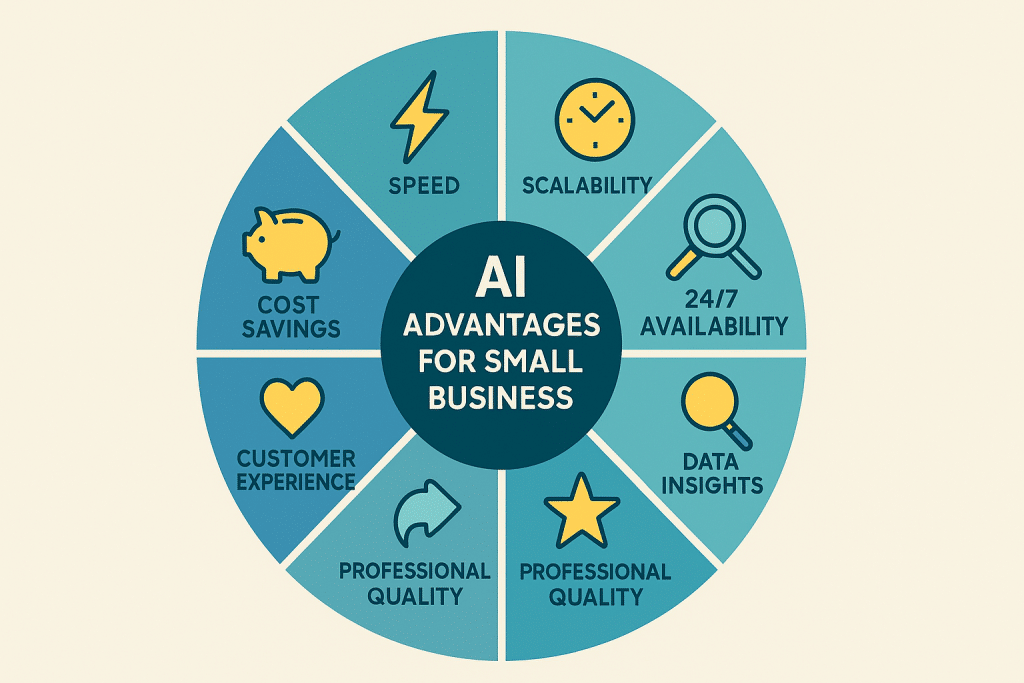
When we implement AI strategically, we gain specific competitive advantages:
1. Speed to Market
We can now launch products, campaigns, and services faster than companies with bureaucratic approval processes. An idea on Monday can be a full campaign by Friday.
2. Personalization at Scale
AI helps us deliver personalized experiences to hundreds or thousands of customers—something previously impossible without a large team.
3. Always-On Availability
While our competitors’ businesses close at 5 PM, our AI-powered services work 24/7, capturing opportunities around the clock.
4. Data-Driven Decisions
We make strategic decisions based on real insights rather than guesswork, giving us precision that rivals companies with dedicated analytics teams.
5. Professional Polish
Our marketing, customer communications, and brand presence can match the quality of much larger competitors.
6. Rapid Adaptation
Small size is actually an advantage—we can implement and iterate on AI tools much faster than corporations hampered by red tape and legacy systems.
Industry-Specific Small Business AI Tools Applications
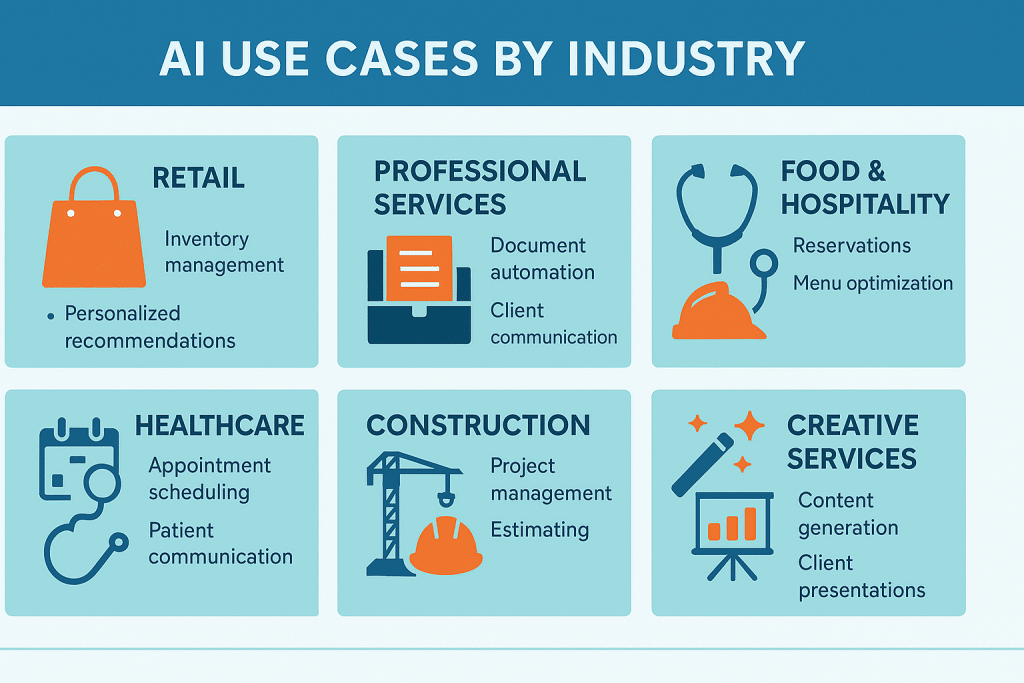
Let’s look at how different types of small businesses can leverage AI:
Retail & E-Commerce
- Inventory prediction to avoid stockouts and overstocking
- Dynamic pricing based on demand and competition
- Personalized product recommendations for each customer
- Automated customer service for order tracking and returns
Professional Services (Consulting, Legal, Accounting)
- Document automation for contracts and proposals
- Client communication management
- Time tracking and billing automation
- Research assistance for case preparation
Restaurants & Hospitality
- Reservation management and optimization
- Menu optimization based on popularity and profitability
- Inventory and food cost management
- Customer feedback analysis and response
Healthcare & Wellness
- Appointment scheduling and reminders
- Patient communication and follow-up
- Insurance verification and billing
- Treatment plan documentation
Home Services (Plumbing, HVAC, Landscaping)
- Service call routing and scheduling
- Estimation and proposal generation
- Customer follow-up automation
- Inventory and equipment tracking
Creative Services (Design, Photography, Writing)
- Project management and client communication
- Contract and invoice automation
- Portfolio presentation generation
- Content repurposing for social media
The Mindset Shift We Need
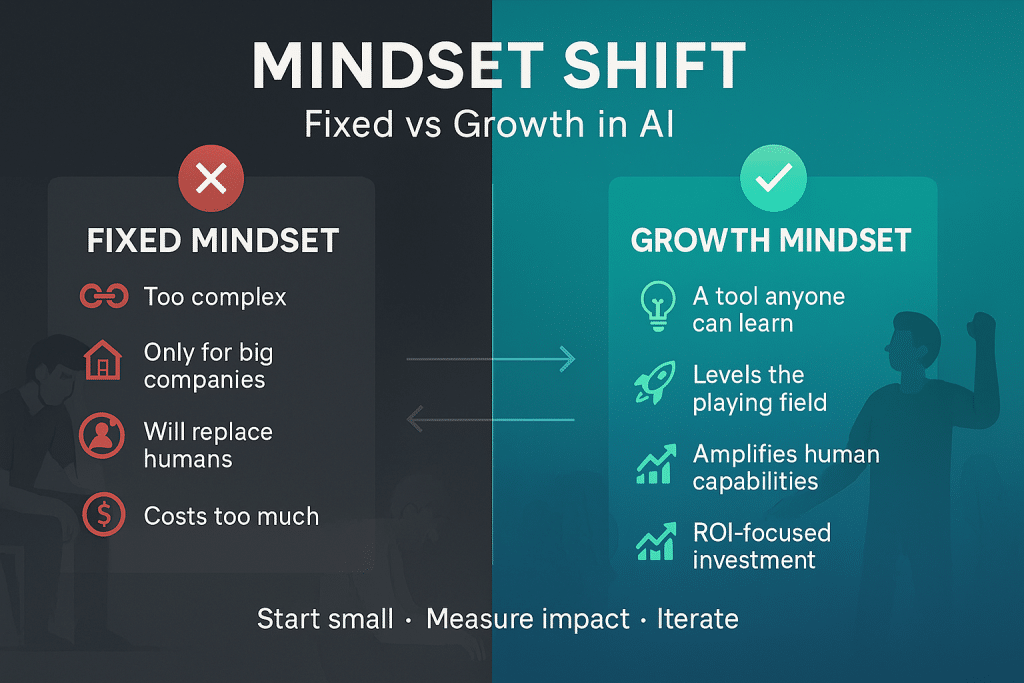
Beyond the tools themselves, succeeding with AI requires a mindset shift:
From: “AI is too complex for my small business”
To: “AI tools are designed to be accessible for non-technical users like me”
From: “I’ll wait until AI matures more”
To: “Early adopters gain competitive advantages while others wait”
From: “AI will replace the human touch”
To: “AI handles busywork so I can focus on relationships”
From: “I can’t afford AI tools”
To: “I can’t afford NOT to use tools that deliver 3.7x ROI”
From: “My business is too unique for AI”
To: “AI adapts to my specific needs and industry”
The small businesses that thrive in 2025 and beyond will be those that embrace AI as a strategic capability, not just a trendy technology.
What’s Next: The Future We’re Building
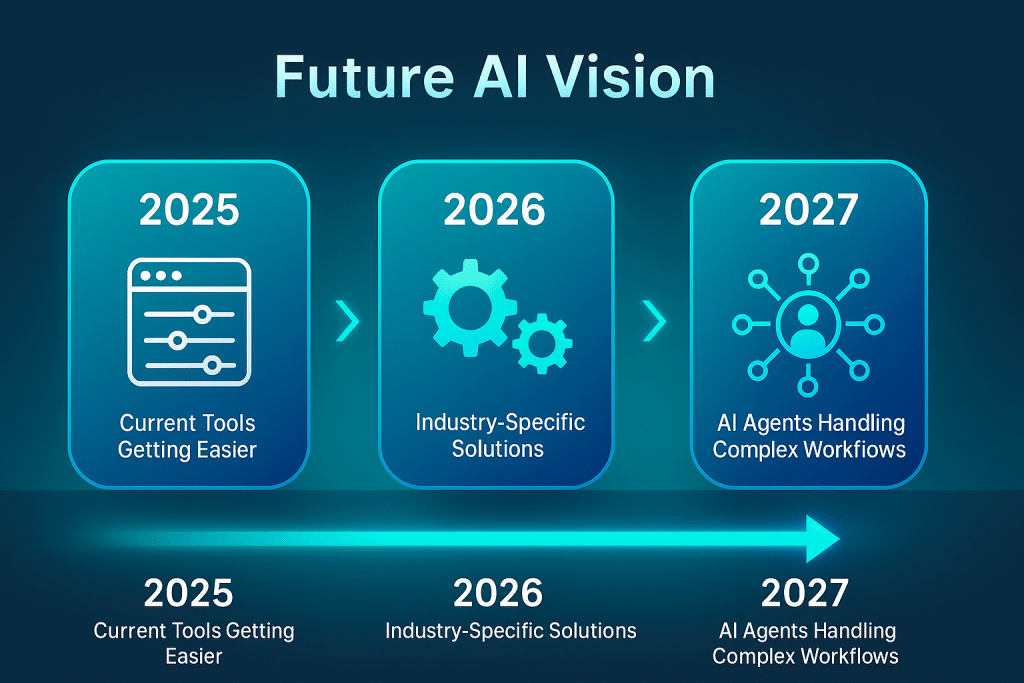
The AI revolution for small businesses is just beginning. Here’s what we can expect:
More Industry-Specific Solutions
Generic AI tools are being joined by solutions tailored for specific industries—accounting AI, restaurant AI, retail AI—making implementation even easier.
Increased Integration
AI tools will talk to each other more seamlessly, creating automated workflows across your entire business ecosystem.
Lower Costs
As competition increases and technology improves, AI tools will become even more affordable, with more generous free tiers.
Better Training Resources
Organizations like the U.S. Chamber of Commerce are launching initiatives specifically to help small businesses adopt AI effectively.
AI Agents
We’ll see the emergence of AI agents that can handle complex, multi-step tasks with minimal supervision, further amplifying what small teams can accomplish.
According to PwC’s 2025 predictions, businesses that effectively integrate AI now will establish advantages that competitors will struggle to overcome. The time to act is now, not later.
Taking Action: Your Next Steps
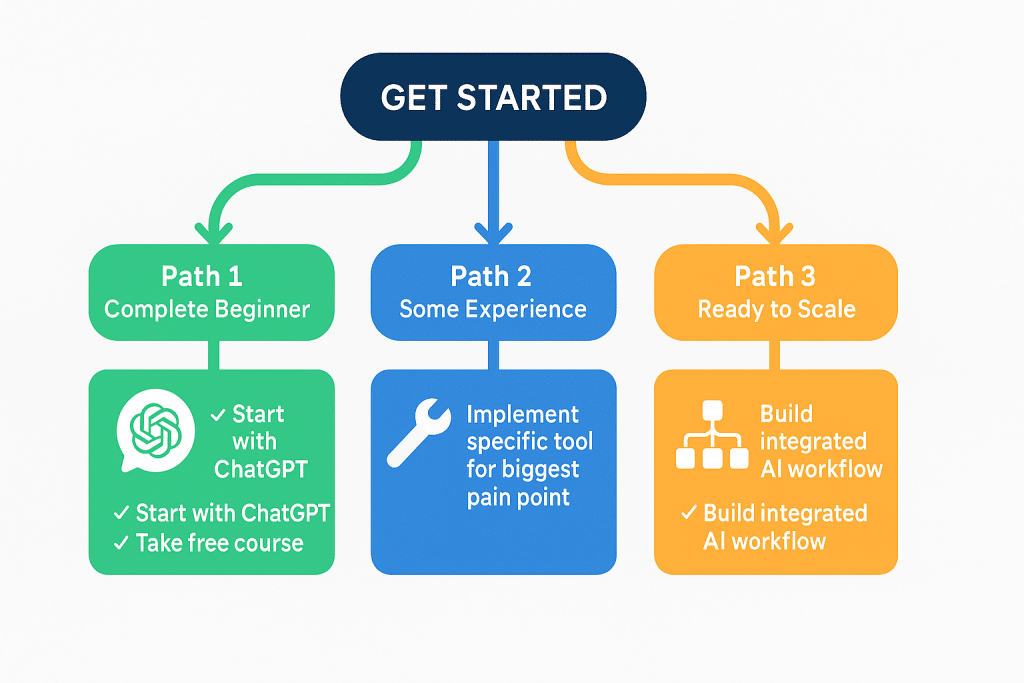
You don’t need to become an AI expert overnight. Here’s how to start based on where you are:
If You’ve Never Used AI:
- Create a free ChatGPT account today
- Use it to draft one email or social media post
- Spend 30 minutes exploring what it can do
- Sign up for the U.S. Chamber’s Small Business B(AI)sics training
If You’ve Experimented But Haven’t Committed:
- Identify your single biggest time drain this week
- Research one AI tool specifically for that problem
- Sign up for a free trial and use it daily for two weeks
- Track time saved and measure results
If You’re Ready to Go All-In:
- Audit your entire operation for AI opportunities
- Create a 90-day implementation plan
- Start with 2-3 tools in different areas (marketing, operations, customer service)
- Set specific KPIs for each tool
- Schedule monthly reviews to optimize and expand
The Bottom Line: We Can Compete, and We Can Win
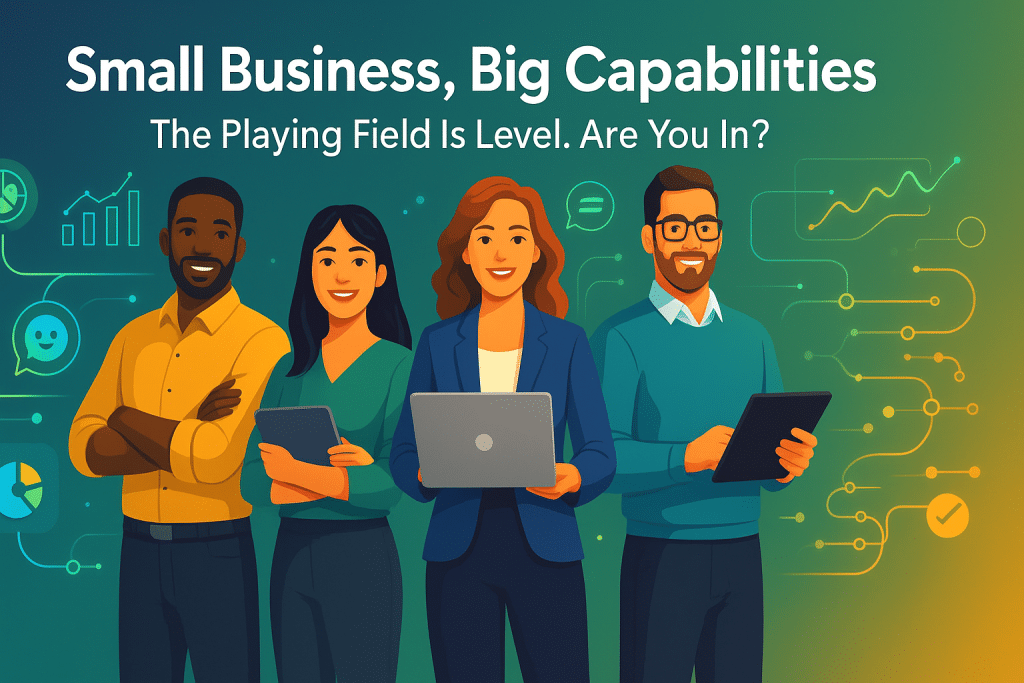
Here’s the truth we need to embrace: the era of small businesses being inherently disadvantaged is over. For the first time, we have access to tools that can amplify our capabilities to match what large corporations achieve with massive teams and budgets.
The statistics are clear:
- 82% of small business owners believe AI adoption is essential for competitiveness
- 66% feel pressure to adopt AI to keep pace with competitors
- Early adopters achieve $3.70 return for every $1 invested
- 95% of US companies are already using AI to work more efficiently
But here’s what matters most: AI doesn’t just help us survive—it helps us win. Our agility, our close customer relationships, our ability to make quick decisions—these advantages are amplified, not diminished, by AI.
We can now:
- Provide 24/7 customer service that rivals Fortune 500 companies
- Create marketing content at corporate quality and speed
- Make data-driven decisions with enterprise-level insights
- Operate with the efficiency of teams many times our size
- Deliver personalized experiences at scale
The playing field isn’t just leveling—in some ways, we have advantages. We can implement AI faster, with less bureaucracy, and adapt more quickly than large corporations constrained by legacy systems and slow decision-making.
The question isn’t whether small businesses can compete using AI tools. The question is: will we seize this historic opportunity, or will we watch from the sidelines while competitors race ahead?
The tools are available. The training resources are there. The economics make sense. The competitive necessity is clear.
The only thing missing is our decision to start.
So let’s stop thinking of ourselves as the underdogs. With AI, we’re not David facing Goliath anymore—we’re David with a smart exoskeleton, advanced targeting systems, and tactical AI support. The giants should be worried about us.
The revolution is here. The tools are ready. The future is ours to claim.
Are you in?
Ready to start your AI journey? Don’t wait for perfect—start with good enough and improve as you go. Your competitors already are.
Frequently Asked Questions: AI Tools for Small Businesses
Do I really need AI to compete in 2025?
The short answer: yes, increasingly so. Here’s why: 82% of small business owners now believe AI adoption is essential for staying competitive, and 66% feel pressure to adopt AI just to keep pace with competitors. Think of it like having a website—10 years ago it was optional, now it’s essential. AI is following the same trajectory. The good news? We’re at the perfect time to adopt, when tools are mature enough to be reliable but not everyone has implemented them yet. Early movers gain advantages that late adopters struggle to catch up with.
Which AI tool should I start with?
Start with the tool that addresses your biggest pain point or time drain. If you’re spending hours on customer inquiries, begin with an AI chatbot. If content creation is killing you, start with an AI writing tool like ChatGPT or Jasper. If you’re losing track of leads, try an AI-powered CRM. Don’t try to implement everything at once—master one tool that solves a real problem, measure the results, then expand. Most successful small businesses start with ChatGPT because it’s free, versatile, and easy to learn.
How long does it take to see results from AI implementation?
Most small businesses see initial time savings within the first week of implementation. Measurable business results (increased sales, reduced costs, improved customer satisfaction) typically appear within 4-8 weeks. However, the learning curve matters—the more you use the tools, the better results you’ll get. Think of it like learning to drive: you can get somewhere useful on day one, but you’ll be much more efficient after a month of practice. Plan for a 30-day ramp-up period to see significant impact.
Can I implement AI tools if I have zero technical skills?
Absolutely! Modern AI tools are specifically designed for non-technical users. If you can use email, browse websites, and use apps on your phone, you can use AI tools. Most feature intuitive interfaces, pre-built templates, and step-by-step guidance. Many are as simple as having a conversation (like ChatGPT) or clicking buttons (like Canva AI). The U.S. Chamber of Commerce even launched Small Business B(AI)sics—a free training program specifically for entrepreneurs with no tech background. You don’t need to understand how AI works internally any more than you need to understand how your smartphone works to use it.
What if my business is too unique or niche for AI?
This is a common concern, but AI’s strength is actually its adaptability. AI tools can be customized for virtually any industry or business model—we’ve seen successful implementations in everything from dog grooming to custom manufacturing to boutique law firms. The key is training the AI on your specific context (which usually just means giving it good examples and clear instructions). In fact, smaller niche businesses often benefit more from AI because they can fine-tune it precisely to their specific needs, whereas large corporations struggle with one-size-fits-all approaches.
How much will implementing AI actually cost me?
The investment varies widely based on your needs, but it’s much more affordable than you might think:
Starting Small (DIY Approach): $0-$100/month
- ChatGPT free tier or ChatGPT Plus ($20/month)
- Canva free tier or Pro ($15/month)
- Basic automation tools (many free options)
- Total: Often under $50/month initially
Growing Business Package: $200-$500/month
- AI writing tools ($50-$150/month)
- AI customer service chatbot ($50-$150/month)
- CRM with AI features ($50-$100/month)
- Automation platform ($50-$100/month)
Comprehensive Setup: $500-$1,500/month
- Multiple specialized tools
- Advanced features and higher usage limits
- Integration services
- Training resources
Compare this to hiring even one part-time employee ($1,500-$3,000/month) or working with an agency ($2,000-$10,000/month). The ROI data is compelling: businesses report an average return of $3.70 for every $1 invested in AI.
What’s the typical ROI timeline for small businesses?
Based on real-world implementations:
Immediate (Week 1-2): Time savings become apparent. Tasks that took hours now take minutes.
Short-term (Month 1-2): Measurable efficiency improvements. You’re completing more work in less time or with fewer resources.
Medium-term (Month 3-6): Business metrics improve. You see increases in sales, customer satisfaction, or cost reductions.
Long-term (6-12 months): Full ROI realization. Most small businesses achieve positive ROI within this timeframe, with many seeing 2-4x returns.
The key is starting with tools that address high-impact areas where time savings directly translate to revenue generation or cost reduction.
Are there hidden costs I should know about?
Be aware of these potential additional costs:
Time Investment: Learning new tools takes time upfront (typically 2-10 hours per tool). This isn’t a monetary cost, but it’s a real investment.
Integration: Some tools charge extra for connecting to other systems you use. Check integration costs before committing.
Scaling: Most AI tools use usage-based pricing. As you grow, costs increase. Budget for this growth.
Training: While many resources are free, paid courses or consultants can accelerate your learning (typically $100-$500 one-time).
Premium Features: Free or basic tiers often have limitations. You may need to upgrade as your needs grow.
The good news? Most of these costs are still far less than traditional alternatives like hiring staff or agencies.
Can I try AI tools before committing to paid plans?
Yes! Most reputable AI tools offer:
Free Tiers: Many tools have permanently free versions with limited features (ChatGPT, Canva, HubSpot CRM, Google AI tools).
Free Trials: Typically 7-30 days to test paid features (Jasper, Synthesia, most CRM platforms).
Money-Back Guarantees: Some offer 30-60 day refunds if not satisfied.
Freemium Models: Start free and only pay as you need more features.
Strategy: Start with free versions, prove value to yourself, then invest in paid plans for the tools that deliver clear results. Never pay for something you haven’t tested first.
How do I know which AI tool is legitimate and not a scam?
With AI hype, there are unfortunately some low-quality tools making big promises. Here’s how to identify legitimate solutions:
Red Flags:
- Promises that sound too good to be true (“Replace all your employees!”)
- No free trial or money-back guarantee
- No recognizable customer testimonials or case studies
- Poor or unclear pricing information
- No clear explanation of what the tool actually does
Green Flags:
- Established companies with track records (Microsoft, Google, Salesforce, HubSpot)
- Transparent pricing and feature lists
- Real customer reviews on independent sites
- Free trial or demo available
- Clear documentation and support resources
- Integration with tools you already use
Research Strategy: Check reviews on G2, Capterra, or TrustPilot. Look for case studies from businesses similar to yours. Start with well-known platforms before experimenting with newer tools.
How long does it take to set up and learn a new AI tool?
Setup Time:
- Simple tools (ChatGPT, basic chatbots): 15-30 minutes
- Medium complexity (marketing tools, CRMs): 1-3 hours
- Complex systems (multi-tool integration): 4-8 hours
Learning Curve:
- Basic proficiency: 2-5 hours of hands-on use
- Comfortable usage: 1-2 weeks of regular use
- Advanced features: 1-2 months of consistent use
Pro Tip: Don’t wait to understand everything before starting. Learn 20% of features that deliver 80% of value, then expand your knowledge over time. Most people overestimate the learning curve—these tools are designed to be intuitive.
Can AI tools integrate with my existing software?
Most modern AI tools are designed to play well with others. Common integrations include:
Communication: Email (Gmail, Outlook), Slack, Microsoft Teams Sales/CRM: Salesforce, HubSpot, Pipedrive, Zoho E-commerce: Shopify, WooCommerce, BigCommerce Productivity: Google Workspace, Microsoft 365, Notion, Asana Social Media: Facebook, Instagram, LinkedIn, Twitter/X Analytics: Google Analytics, Mixpanel
Integration Methods:
- Native integrations: Built-in, one-click connections
- Zapier/Make: Connects thousands of apps without coding
- APIs: For custom integrations (requires developer)
Before choosing a tool, check its integration page to ensure it connects with your critical systems. Most list integrations prominently on their websites.
What happens to my data when I use AI tools?
This is a crucial question. Here’s what you need to know:
Data Usage Models:
- Training Data: Some tools use your inputs to improve their AI (OpenAI previously did this). You can often opt out.
- Private Processing: Premium tiers typically don’t use your data for training.
- On-Premise Options: Some tools offer hosting on your own servers for sensitive data.
Best Practices:
- Read privacy policies before uploading sensitive information
- Use tools with SOC 2, GDPR, or HIPAA compliance if handling sensitive data
- Start by testing with non-sensitive information
- Use enterprise plans for customer or financial data
- Consider on-premise or private cloud options for highly sensitive industries
Action: For small businesses, start with publicly available information (blog posts, marketing copy) before progressing to more sensitive data as you understand the tool’s security measures.
Do I need to hire someone to manage AI tools?
Not initially, and often not at all. Most small businesses successfully implement AI with:
DIY Approach (0-5 employees):
- You learn and implement tools yourself
- Use free training resources
- Start with user-friendly platforms
- Cost: Your time only
Light Support (5-20 employees):
- Designate one tech-savvy team member as “AI champion”
- Consider 1-2 consulting sessions ($150-$500) for setup help
- Use vendor support resources
- Cost: Minimal, mostly internal time
Professional Help (20+ employees or complex needs):
- Hire consultant for strategy and setup ($1,000-$5,000 one-time)
- Or part-time specialist for ongoing optimization
- Cost: Depends on complexity
The reality: most small business owners handle AI tools themselves or with existing staff. It’s much less technical than you think.
Is my customer data safe when using AI tools?
Data security depends on which tools you choose and how you use them. Here’s how to stay safe:
Choose Reputable Tools:
- Use established providers with security certifications (SOC 2, ISO 27001)
- Check for GDPR and CCPA compliance
- Review their data breach history
Use Features Properly:
- Enable two-factor authentication
- Use role-based access controls
- Don’t share login credentials
- Regularly review who has access
Be Smart About Data:
- Don’t paste highly sensitive information into free tools
- Use enterprise/business plans for customer data
- Consider data residency (where data is stored geographically)
- Anonymize data when possible
Have a Data Policy:
- Document what data goes into which tools
- Train team on proper AI tool usage
- Have incident response plans
Reality Check: For most small businesses, AI tools from major providers (Microsoft, Google, Salesforce) are more secure than your own systems. Start there for peace of mind.
Will AI replace my employees?
No, and here’s why: AI is a tool that amplifies human capabilities, not a replacement for people. Think of it like power tools—a power drill doesn’t replace carpenters; it makes them more productive.
What Changes:
- Tasks shift: Repetitive work gets automated; humans focus on creative, strategic, and relationship work
- Roles evolve: Jobs become more interesting as mundane tasks disappear
- Capacity increases: Same team can serve more customers or take on bigger projects
Real-World Evidence: Most small businesses using AI report they haven’t reduced headcount. Instead, they’ve:
- Grown revenue without proportional staffing increases
- Improved employee satisfaction (less boring work)
- Redirected staff to higher-value activities
- Reduced the need to hire additional people for growth
Your Approach: Frame AI as a tool that helps your team be more successful, not as a threat to their jobs. Many employees are relieved to hand off tedious tasks to AI.
How do I ensure AI doesn’t make my business feel impersonal?
This is where strategy matters more than the tool itself. AI should enhance, not replace, the personal touch that makes your small business special.
Keep It Personal:
- Use AI for logistics, human for relationships (AI schedules appointments, you conduct consultations)
- Let AI handle first contact, you handle follow-up (AI qualifies leads, you close sales)
- Use AI for research, human for judgment (AI analyzes data, you make strategic decisions)
- Automate the background, personalize the foreground (AI updates records, you send personalized thank-you notes)
Best Practices:
- Always identify when customers are interacting with AI
- Make it easy to reach a human when needed
- Use AI to give you more time for personal interactions
- Customize AI outputs to match your brand voice
- Add personal touches to AI-generated content
Success Story: A boutique hotel uses AI for booking and FAQs but has the owner personally greet every guest and send handwritten thank-you notes. Revenue increased 40% while maintaining their “personal touch” reputation.
What are the ethical considerations of using AI in my business?
Being a responsible AI user helps your business and society:
Transparency: Disclose when AI is being used (especially for customer-facing applications). Most customers don’t mind AI if you’re honest about it.
Bias Awareness: AI can perpetuate biases in training data. Regularly review outputs for fairness, especially in hiring, lending, or customer service contexts.
Data Privacy: Only collect and process data you truly need. Follow privacy regulations (GDPR, CCPA) and your own stated policies.
Accuracy: Don’t trust AI blindly. Always verify critical information, especially in healthcare, legal, or financial contexts.
Human Oversight: Keep humans in the loop for important decisions that affect people’s lives, livelihoods, or well-being.
Environmental Impact: While AI does use energy, most small business applications have negligible environmental impact compared to benefits.
Action: Create a simple AI usage policy for your business. It doesn’t have to be complex—just clear guidelines on appropriate use.
Which industries benefit most from AI tools?
The truth? Every industry can benefit, but some see faster, more dramatic results:
High-Impact Industries:
- E-commerce/Retail: Inventory, pricing, recommendations, customer service
- Professional Services: Document automation, client communication, research
- Real Estate: Lead qualification, property descriptions, market analysis
- Marketing Agencies: Content creation, social media, campaign optimization
- Restaurants/Food Service: Reservations, menu optimization, ordering
Growing Impact Industries:
- Healthcare/Wellness: Scheduling, patient communication, billing
- Construction/Contractors: Estimating, scheduling, project management
- Education/Training: Course creation, student support, assessment
- Financial Services: Analysis, reporting, compliance monitoring
Reality: If your business involves repetitive tasks, customer communication, content creation, or data analysis—you can benefit from AI. That covers almost everything!
Can AI help with marketing if I have zero marketing experience?
Absolutely—this is one of AI’s superpowers for small businesses. AI tools can help you:
Content Creation:
- Write blog posts, social media updates, and email campaigns
- Generate image ideas or create graphics (Canva AI, Midjourney)
- Create video scripts and even videos (Synthesia)
- Brainstorm campaign ideas
Strategy:
- Analyze what content performs best
- Identify trending topics in your industry
- Suggest optimal posting times
- Recommend keywords for SEO
Execution:
- Schedule posts across platforms
- A/B test different approaches
- Track results and provide insights
- Personalize messages for different audiences
Real Example: A local bakery owner with no marketing background used ChatGPT to create a month of social media content in two hours, Canva AI to design graphics, and a basic scheduler to post automatically. Website traffic increased 150% in 90 days.
Getting Started: Use ChatGPT (free) to create your first week of content. See the results, then expand from there.
How can AI help with customer service without losing the personal touch?
AI actually helps you be MORE personal by handling the routine stuff and giving you time for meaningful interactions:
AI Handles:
- Common questions with instant answers (24/7 availability)
- Order status and tracking updates
- Appointment scheduling and reminders
- Initial problem triage and categorization
- Information gathering before human handoff
You Handle:
- Complex or sensitive issues
- Relationship building and check-ins
- Creative problem-solving
- Service recovery when things go wrong
- High-value customer interactions
Hybrid Approach: The most successful small businesses use AI for speed and efficiency, then add personal touches:
- AI chatbot handles initial query → You follow up personally with solution
- AI schedules appointment → You send personal confirmation with helpful tips
- AI processes order → You include handwritten thank-you note
- AI tracks satisfaction → You personally reach out to unhappy customers
Result: Customers get faster response times (thanks to AI) AND personal attention from you (because AI freed your time). It’s the best of both worlds.
Should I build custom AI or use off-the-shelf tools?
For 99% of small businesses: start with off-the-shelf tools. Here’s why:
Off-the-Shelf (Recommended):
- Faster: Implement in hours or days, not months
- Cheaper: $20-$500/month vs. $10,000-$100,000+ for custom
- Proven: Already tested by thousands of businesses
- Supported: Get help when you need it
- Updated: Automatic improvements and new features
- Low risk: Cancel if it doesn’t work
Custom-Built (Rarely Needed):
- When: You have very unique needs that no existing tool addresses
- When: You’re processing highly sensitive data requiring special security
- When: You’ve already maxed out what existing tools can do
- When: Your business is large enough to justify the investment
Action: Start with existing tools. If you reach their limitations and have clear ROI justification, then consider custom solutions. Don’t skip ahead to custom—it’s expensive and risky.
Can AI help me compete with Amazon/big retailers?
While you won’t beat Amazon on logistics and scale, AI helps you compete on dimensions where small businesses can excel:
Your AI-Enhanced Advantages:
Personalization: Use AI to deliver highly personalized recommendations and experiences. Amazon is generic; you can be specific to local needs or niche interests.
Expert Knowledge: AI can help you share deep expertise in your niche. Become the trusted authority Amazon can’t match.
Customer Relationships: AI handles transactional stuff so you have time for genuine relationships. Amazon is faceless; you’re not.
Agility: Implement new ideas instantly. Amazon needs months. Use AI to test and iterate faster.
Local Optimization: AI can analyze local trends and preferences. Serve your community better than generic national retailers.
Unique Products/Services: Use AI to identify gaps in what big retailers offer and fill those niches.
Real Example: A small outdoor gear shop uses AI to analyze customer questions and create specialized guides (backpacking, climbing, camping) for their region. They can’t compete on price, but they dominate local search for outdoor advice and built a loyal community. Revenue up 85% while Amazon presence in their market grew.
Next Steps and Advanced
What’s the single most important thing to do first?
Do this today: Create a free ChatGPT account and use it to accomplish one real business task—draft an email, brainstorm ideas, write a social media post, outline a blog article. Don’t overthink it.
This single action will:
- Break through the “too intimidating” barrier
- Give you immediate practical value
- Show you how accessible AI actually is
- Build confidence to explore more tools
- Cost you absolutely nothing
Spend 20 minutes on this. It’s the fastest way to go from wondering about AI to actually using it. Everything else builds from here.
How do I stay updated as AI tools evolve rapidly?
AI is changing fast, but you don’t need to track everything:
Efficient Approach:
- Follow 2-3 key sources: Pick reliable newsletters (e.g., The Rundown AI, TLDR AI) or YouTube channels focused on practical AI for business
- Join communities: Facebook groups, LinkedIn groups, or local business associations with AI focus
- Vendor updates: Pay attention to emails from tools you’re using—they announce new features
- Monthly reviews: Spend 30 minutes monthly checking what’s new in your industry
- Annual reassessment: Once yearly, evaluate if new tools could replace your current stack
Don’t:
- Try to follow every AI announcement
- Switch tools constantly chasing new features
- Attend every webinar or read every article
- Stress about “falling behind”
Reality: Most improvements are incremental. Your current tools will get better over time through updates. Focus on using what you have well rather than constantly seeking the next shiny object.
How can I measure if AI is actually helping my business?
Measure what matters for your business. Here are frameworks:
Time Metrics:
- Hours saved per week on specific tasks
- Time from inquiry to response
- Speed of completing regular business processes
- Time available for revenue-generating activities
Financial Metrics:
- Cost reduction (fewer hours needed for tasks)
- Revenue increase (more capacity for sales)
- Cost per customer acquisition
- Average order value (if using AI for upselling)
- Customer lifetime value
Quality Metrics:
- Customer satisfaction scores
- Response accuracy
- Fewer errors or mistakes
- Consistency of outputs
Tracking Method:
- Baseline: Measure current performance before implementing AI
- Track: Monitor specific metrics weekly
- Compare: After 30/60/90 days, compare to baseline
- Adjust: Optimize based on what data shows
Simple Approach: Pick 3 metrics that matter most to your business. Track them monthly. If they’re improving and you can attribute it to AI, you’re on the right track.
Where can I get help if I get stuck?
You’re not alone—plenty of resources exist:
Free Resources:
- U.S. Chamber of Commerce: Small Business B(AI)sics program (free training)
- YouTube: Tutorials for almost every AI tool
- Tool documentation: Most platforms have detailed guides
- Community forums: Reddit, Facebook groups, LinkedIn communities
- Vendor support: Many tools offer free email support
Paid Options:
- Online courses: Udemy, Coursera ($20-$200)
- Consultants: One-time setup help ($500-$2,000)
- Agencies: Ongoing optimization ($1,000-$5,000/month)
- Local resources: SCORE mentors, Small Business Development Centers
Best Path: Start with free resources. If you’re stuck after trying, invest in a few hours of consultant time. Most small businesses never need ongoing paid support—just an initial boost.
Still Have Questions?
The AI landscape for small businesses is evolving rapidly, but the fundamentals remain: these are tools designed to amplify what you can do, not replace who you are.
Remember:
- You don’t need to be a tech expert
- You don’t need a big budget
- You don’t need to understand everything before starting
- You’re not alone—82% of small businesses are on this journey
Most importantly: The cost of not adopting AI is increasingly higher than the cost of learning it. Start small, start now, and build from there.
The future belongs to small businesses that embrace AI as a competitive advantage. Will yours be one of them?
Ready to take the first step? Go back to the article and follow the 30-day implementation plan. Your journey starts today.
Related articles on Aihika.com
- 7 Game-Changing Powerful Ways to Use AI Tools for Small Business in 2025
- Can AI Help Small Business Stay Consistent on Social Media?
- AI Tools for Routine Work: Automating the Mundane
- What I Learned Spending $2,800 on AI Tools (At Age 49)
- ChatGPT for SEO: Complete Beginner’s Guide (2025)
- Which AI Is Best in SEO?
Small business AI – key sources
- Reimagine Main Street: Small Businesses Look to AI for Competitive Edge
- U.S. Chamber: Empowering Small Business – The Impact of Technology
- Salesforce: AI Tools for Small Business (Tips & Best Practices)
- University of Cincinnati: Guide to Using AI Tools for Small Business
- ITIF: AI Can Improve US Small Business Productivity
- McKinsey: The State of AI – Global Survey 2025
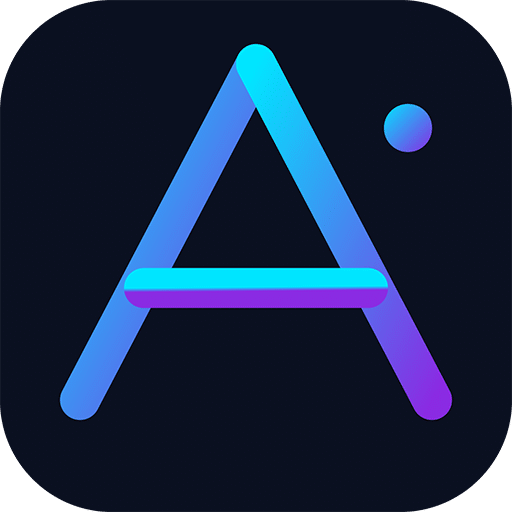
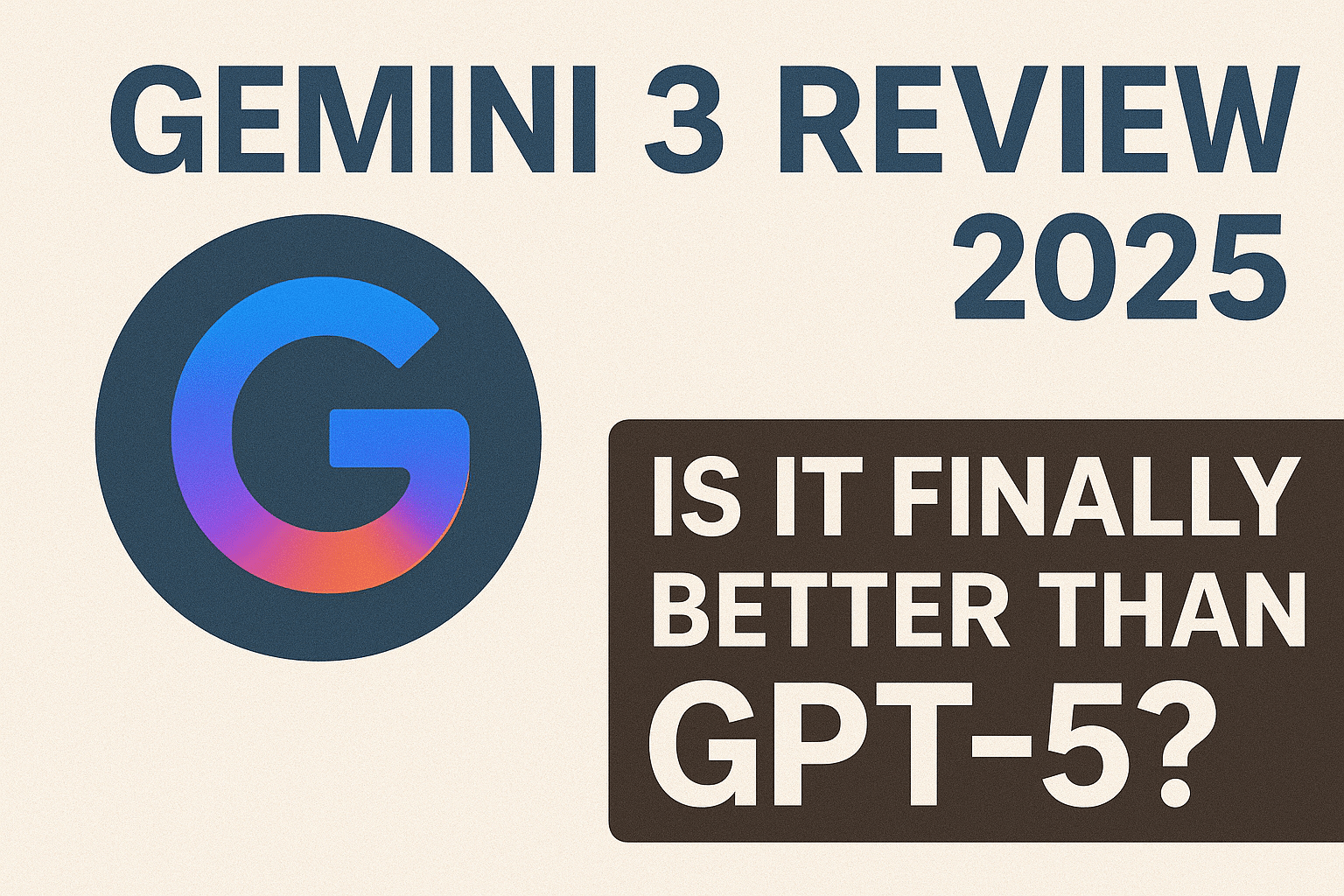
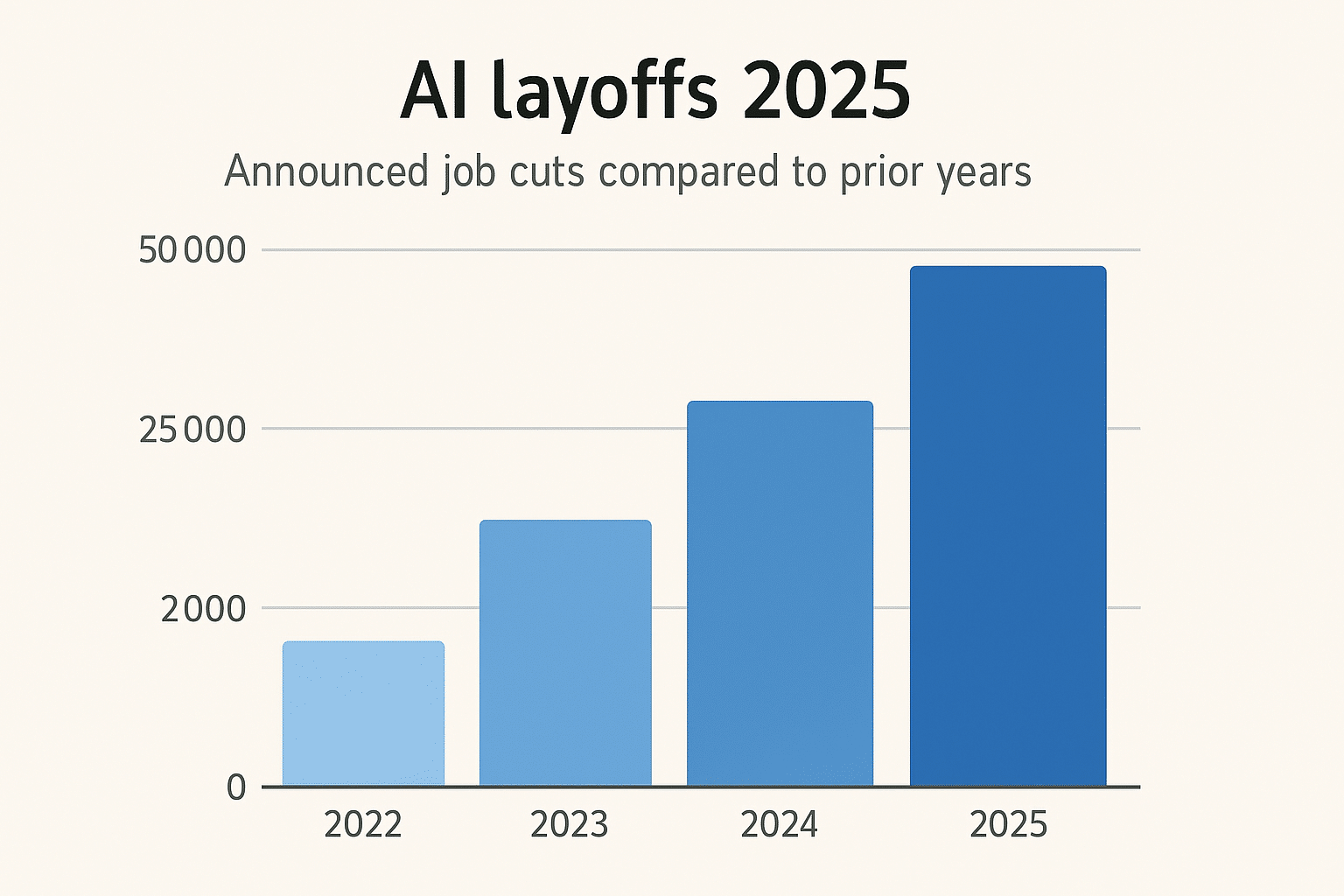






Leave a Reply